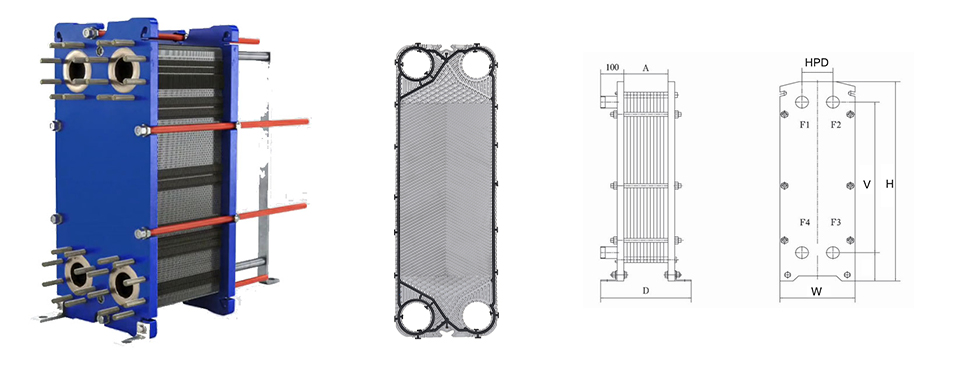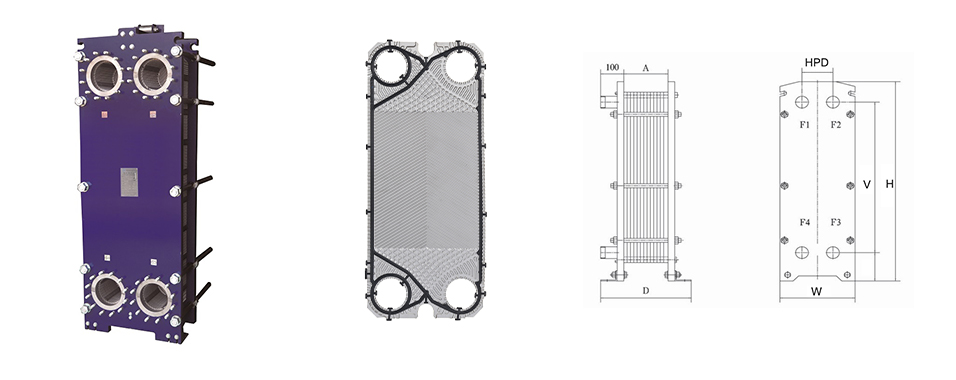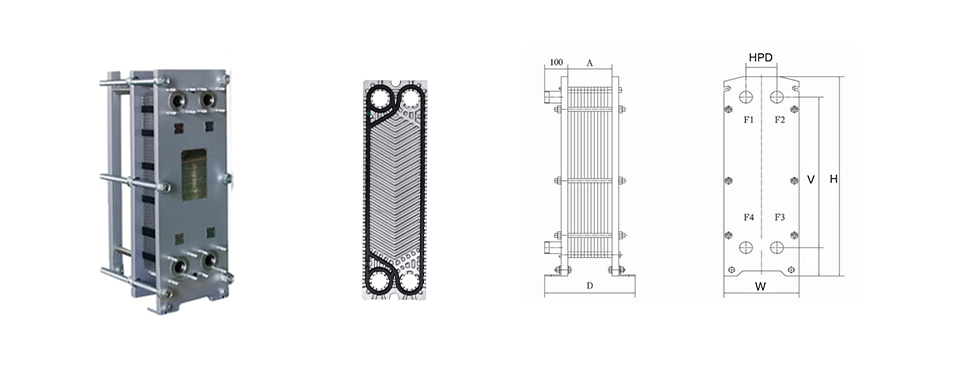Popular science introduction of plate heat exchanger
The plate heat exchanger is a new type of high-efficiency heat exchanger made up of a series of metal sheets with a certain corrugated shape. Thin rectangular channels are formed between various plates, and heat exchange is carried out through the plates. Plate heat exchangers are ideal equipment for liquid-liquid and liquid-vapor heat exchange. It has the characteristics of high heat exchange efficiency, low heat loss, compact and lightweight structure, small footprint, convenient installation and cleaning, wide application, long service life and so on.
There are mainly two types of plate heat exchangers: frame type (removable) and brazed type. The plate forms mainly include three types of herringbone corrugated plates, horizontal straight corrugated plates and knob-shaped plates.
Brazed heat exchanger structure
The main structure
⒈Plate heat exchanger plates and plate heat exchanger gaskets
⒉Fixed pressure plate
⒊Activity pressure plate
⒋Clamping bolt
⒌Upper guide rod
⒍Lower guide rod
⒎Back column
A group of plates are stacked to form a plate package with a channel pattern. Both ends are respectively equipped with end plates with connecting pipes. The whole machine is made by vacuum brazing. Adjacent channels flow two kinds of media respectively. The plates between adjacent channels are pressed into corrugations. Type to enhance the heat exchange between the two media. In the brazed plate heat exchanger for refrigeration, the water flow channel is always one more than the refrigerant flow channel.
There are mainly two types of plate heat exchangers: frame type (removable) and brazed type. The plate forms mainly include three types of herringbone corrugated plates, horizontal straight corrugated plates and knob-shaped plates.
Brazed heat exchanger structure
The main structure
⒈Plate heat exchanger plates and plate heat exchanger gaskets
⒉Fixed pressure plate
⒊Activity pressure plate
⒋Clamping bolt
⒌Upper guide rod
⒍Lower guide rod
⒎Back column
A group of plates are stacked to form a plate package with a channel pattern. Both ends are respectively equipped with end plates with connecting pipes. The whole machine is made by vacuum brazing. Adjacent channels flow two kinds of media respectively. The plates between adjacent channels are pressed into corrugations. Type to enhance the heat exchange between the two media. In the brazed plate heat exchanger for refrigeration, the water flow channel is always one more than the refrigerant flow channel.








